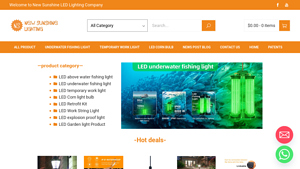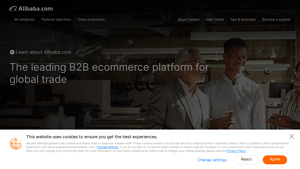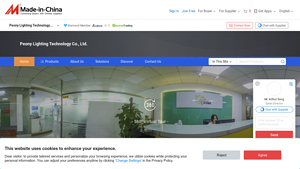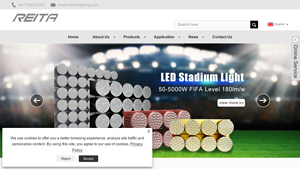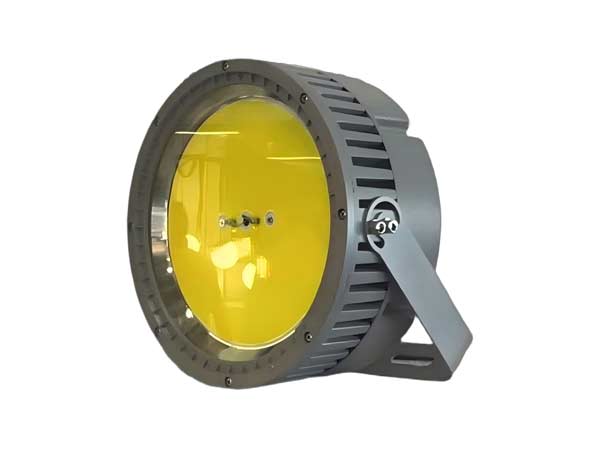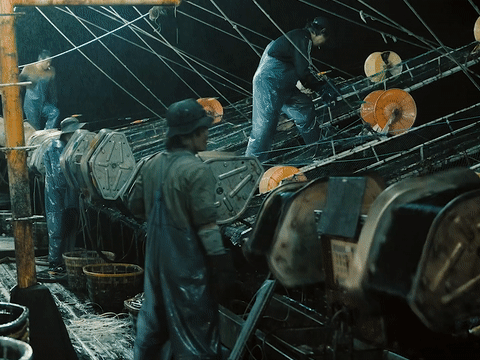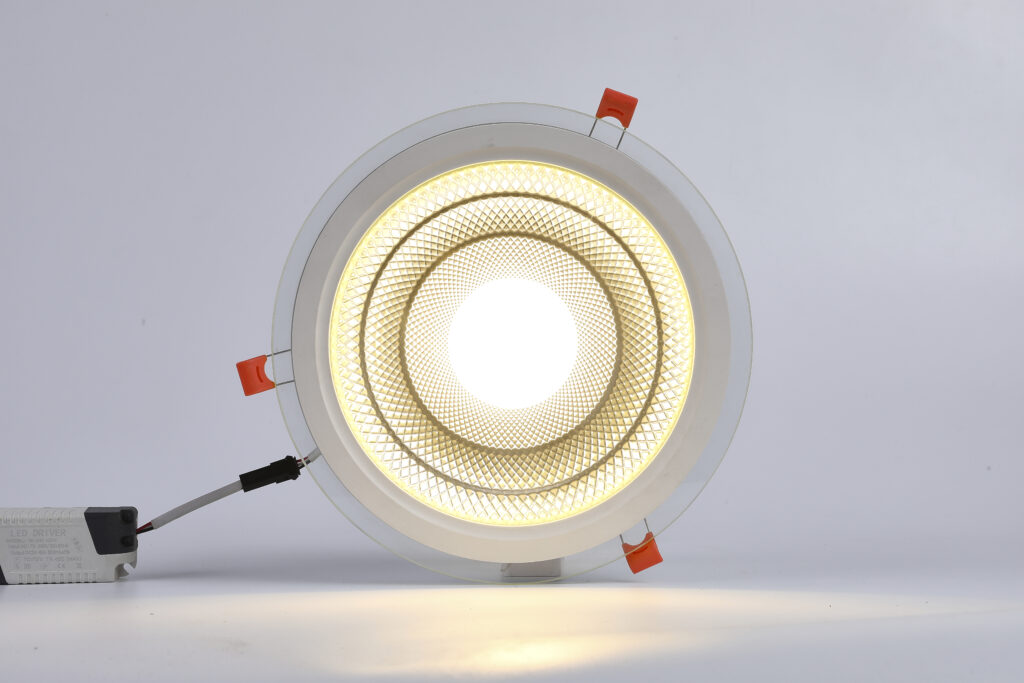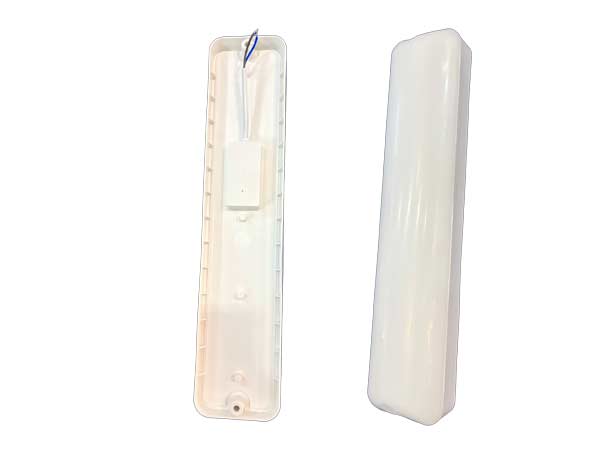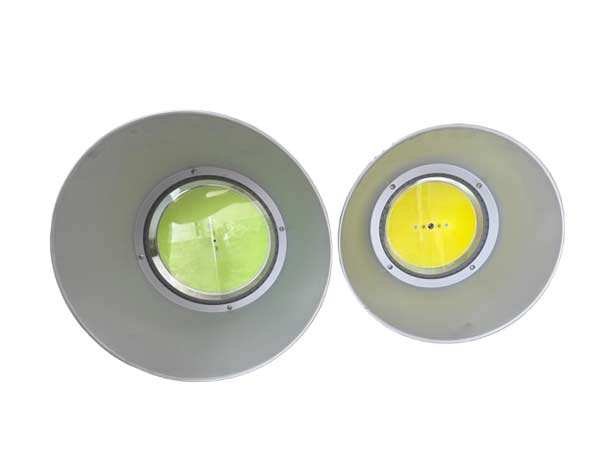Article Navigation
- Introduction: Navigating the Global Market for 1500W LED fishing light
- Understanding 1500W LED fishing light Types and Variations
- Key Industrial Applications of 1500W LED fishing light
- Strategic Material Selection Guide for 1500W LED fishing light
- In-depth Look: Manufacturing Processes and Quality Assurance for 1500W LED fishing light
- Comprehensive Cost and Pricing Analysis for 1500W LED fishing light Sourcing
- Spotlight on Potential 1500W LED fishing light Manufacturers and Suppliers
- Essential Technical Properties and Trade Terminology for 1500W LED fishing light
- Navigating Market Dynamics, Sourcing Trends, and Sustainability in the 1500W LED fishing light Sector
- Frequently Asked Questions (FAQs) for B2B Buyers of 1500W LED fishing light
- Important Disclaimer & Terms of Use
- Strategic Sourcing Conclusion and Outlook for 1500W LED fishing light
Introduction: Navigating the Global Market for 1500W LED fishing light
Navigating the complexities of the global market for 1500W LED fishing lights presents both challenges and opportunities for international B2B buyers, especially those from Africa, South America, the Middle East, and Europe. As the demand for energy-efficient lighting solutions continues to rise, understanding the nuances of this product category is critical for making informed sourcing decisions.
This comprehensive guide aims to equip buyers with the knowledge needed to navigate the market effectively. From understanding the technological advancements in LED lighting to evaluating supplier reliability, we will cover essential aspects that influence purchasing choices. The guide will delve into key features of 1500W LED fishing lights, including their energy efficiency, durability, and operational benefits, all of which can significantly impact operational costs and fishing productivity.
Moreover, we will explore the regulatory landscape and environmental considerations that are increasingly shaping market dynamics, ensuring that buyers are not only compliant but also aligned with sustainable practices. By empowering B2B buyers with actionable insights and strategic recommendations, this guide serves as a vital resource for optimizing procurement processes and enhancing competitiveness in the fishing industry. Whether you are a seasoned buyer or new to the market, our expert analysis will help you make sound decisions that align with your business objectives.
Understanding 1500W LED fishing light Types and Variations
| Type Name | Key Features | Primary B2B Applications | Pros | Cons |
|---|---|---|---|---|
| Submersible LED Lights | Waterproof, durable materials, varying beam angles | Commercial fishing, aquaculture | High visibility underwater, energy-efficient | Limited range above water |
| Floating LED Lights | Buoyant design, easy to deploy, bright light output | Recreational fishing, emergency signaling | Portable, versatile for various environments | Vulnerable to strong currents |
| Fixed Mount LED Lights | Permanent installation, wide-angle illumination, robust construction | Fishing docks, piers, harbor lighting | Long-lasting, reliable for stationary use | Higher installation costs |
| Rechargeable LED Lights | Battery-operated, portable, quick recharge, often solar-assisted | Night fishing, remote locations | Flexibility in deployment, eco-friendly options | Limited runtime per charge |
| Remote-Controlled LED Lights | Adjustable brightness, programmable settings, wireless operation | Large-scale fishing operations, event lighting | High convenience, customizable lighting solutions | Requires careful management of battery life |
Submersible LED Lights
Submersible LED lights are designed specifically for underwater use, making them ideal for commercial fishing and aquaculture applications. These lights are waterproof and constructed from durable materials, allowing them to withstand harsh marine environments. Their varying beam angles enhance visibility, attracting fish efficiently. B2B buyers in the fishing industry benefit from their energy efficiency and low maintenance needs, although the primary limitation is their effectiveness above water.
Floating LED Lights
Floating LED lights are versatile tools used in both recreational and emergency situations. Their buoyant design allows for easy deployment in various water bodies. These lights provide bright illumination, making them suitable for night fishing or as signaling devices. For B2B buyers, the portability and ease of use are significant advantages, though they may not perform well in strong currents or rough weather conditions.
Fixed Mount LED Lights
Fixed mount LED lights are permanently installed solutions that provide wide-angle illumination, making them excellent for fishing docks, piers, and harbor lighting. Their robust construction ensures longevity and reliability in stationary applications. B2B buyers looking for consistent lighting solutions will find these lights advantageous, although they come with higher installation costs and a lack of mobility compared to other types.
Rechargeable LED Lights
Rechargeable LED lights are battery-operated and often come with solar-assist features, catering to night fishing and remote locations where power sources are limited. Their flexibility in deployment makes them highly appealing to B2B buyers in the fishing sector. However, the runtime per charge can be a concern, necessitating careful management to avoid disruptions during use.
Remote-Controlled LED Lights
Remote-controlled LED lights offer the latest in customizable lighting solutions for large-scale fishing operations and event lighting. With adjustable brightness and programmable settings, these lights provide high convenience and tailored illumination. B2B buyers can significantly enhance their operational efficiency, but they require careful management of battery life to maintain functionality throughout use.
Key Industrial Applications of 1500W LED fishing light
The 1500W LED fishing light has become an essential tool across various industries, providing significant advantages in visibility and efficiency. Below are some of the key industries and specific applications where these lights are utilized, along with insights into their business value and considerations for sourcing.
| Industry | Specific Application | Business Value | Sourcing Considerations |
|---|---|---|---|
| Commercial Fishing | Enhancing catch rates | Boosts productivity by attracting fish, leading to higher yields. | Look for lights with high lumen output and durability against marine environments. |
| Aquaculture | Pond and tank illumination | Improves fish growth rates and feeding efficiency, enhancing overall yield. | Sourcing should focus on energy efficiency and waterproof ratings. |
| Recreational Fishing | Night fishing expeditions | Increases safety and effectiveness for anglers, leading to a better experience. | Consider portability and battery life for ease of transport. |
| Marine Research | Field studies and surveys | Facilitates data collection during nocturnal activities, improving research outcomes. | Ensure lights are lightweight and easy to deploy in various environments. |
| Maritime Security | Vessel monitoring and patrols | Enhances visibility for security operations, ensuring safer navigation and surveillance. | Focus on rugged designs and operational reliability in harsh conditions. |
Detailed Applications
Commercial Fishing
In the commercial fishing sector, 1500W LED fishing lights are pivotal for enhancing catch rates. These lights attract various fish species, making it easier for fishermen to maximize their haul. The increased visibility not only aids in targeting specific fish but also extends fishing hours into the night, thereby improving overall productivity. For B2B buyers, investing in high-lumen output and durable lights that can withstand saltwater exposure is crucial.
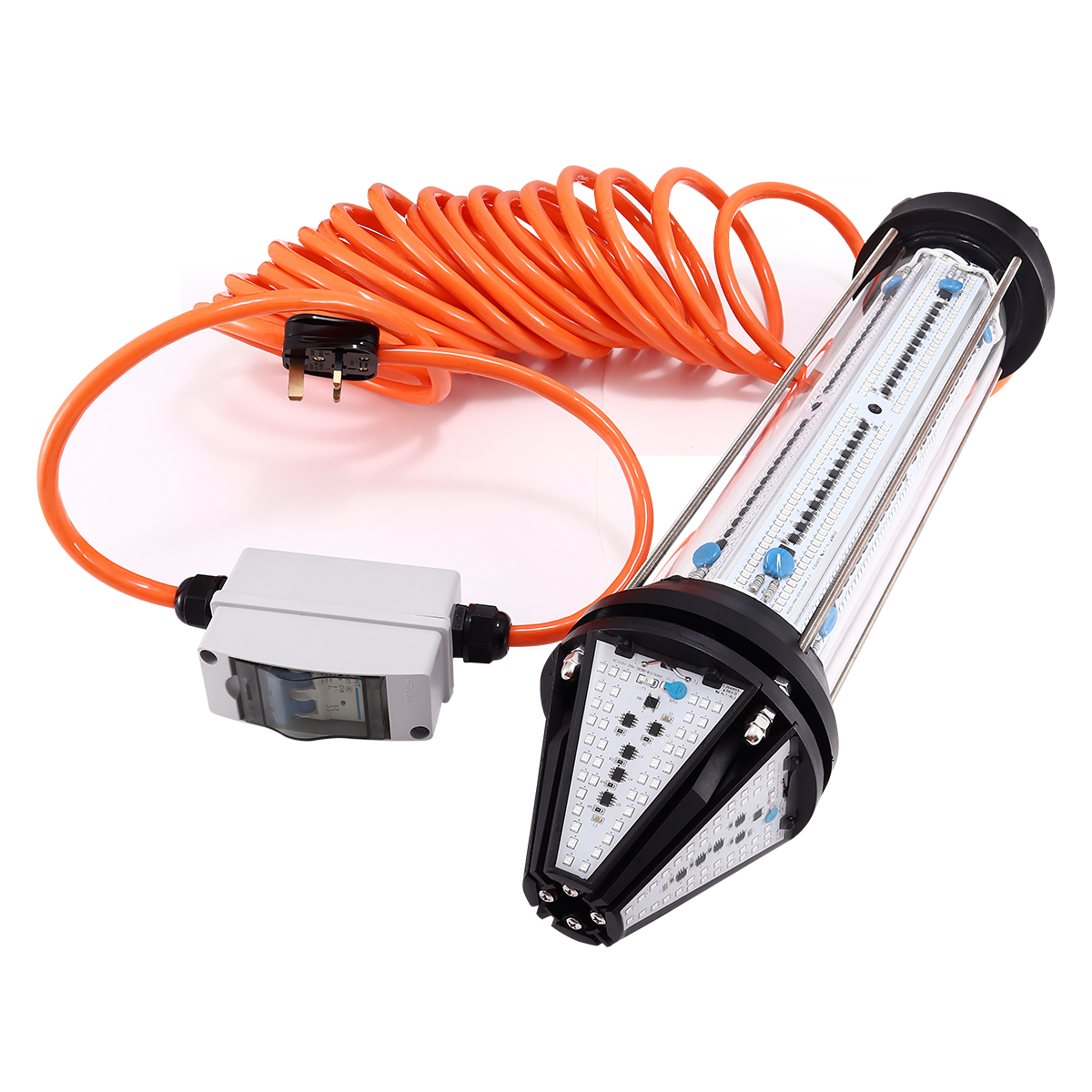
Illustrative Image (Source: Google Search)
Aquaculture
In aquaculture, these LED lights are employed to illuminate ponds and tanks, promoting fish activity during feeding times. The enhanced light conditions can lead to improved growth rates and feeding efficiency, ultimately boosting the yield for aquaculture operations. Buyers should prioritize energy-efficient models that also offer waterproof features to ensure longevity in aquatic environments.
Recreational Fishing
For recreational fishing enthusiasts, 1500W LED fishing lights significantly enhance night fishing expeditions. By providing ample illumination, these lights increase safety and effectiveness, leading to a more enjoyable fishing experience. B2B buyers in this segment should consider the portability of the lights and their battery life, ensuring they can be easily transported and used in various locations.
Marine Research
Marine researchers utilize these lights for field studies and surveys, particularly during nocturnal research activities. The enhanced visibility facilitates better data collection and observation of marine life. For B2B buyers, sourcing lightweight and easily deployable lighting solutions is essential to support diverse research needs in challenging environments.
Maritime Security
In the realm of maritime security, 1500W LED fishing lights are crucial for vessel monitoring and patrols. These lights enhance visibility during nighttime operations, aiding in safe navigation and effective surveillance. Buyers should focus on rugged designs that can withstand harsh maritime conditions while ensuring reliability for extended use in security applications.
In summary, the versatility of 1500W LED fishing lights across various industries underscores their value, making them a smart investment for B2B buyers aiming to enhance operational efficiency and safety.
Strategic Material Selection Guide for 1500W LED fishing light
When selecting materials for a 1500W LED fishing light, it is crucial to consider the properties, advantages, and disadvantages of various materials. This selection impacts not only the performance and durability of the lights but also their cost-effectiveness and overall value in the market. Below, we analyze four common materials used in the construction of LED fishing lights.
1. Aluminum
Properties:
Aluminum is lightweight, corrosion-resistant, and has excellent thermal conductivity. It can be easily machined and molded, making it a popular choice for various components in LED lighting.
Pros:
- Lightweight: Reduces overall weight, making it easier to handle and install.
- Corrosion Resistance: Ideal for marine environments, as it withstands exposure to saltwater.
- Thermal Conductivity: Efficiently dissipates heat generated by the LEDs, enhancing performance and lifespan.
Cons:
- Cost: Higher quality aluminum can be more expensive than other materials.
- Durability: While corrosion-resistant, aluminum can be prone to dents and scratches.
Application Impact:
Aluminum fixtures can enhance the longevity and reliability of fishing lights, especially in harsh environments. However, the cost may be a consideration for budget-conscious buyers.
2. Polycarbonate
Properties:
Polycarbonate is a high-impact thermoplastic known for its strength and transparency. It is often used for lenses and protective covers in LED lights.
Pros:
- Impact Resistance: Highly durable against impacts, reducing the risk of breakage.
- Lightweight: Like aluminum, it helps keep the overall weight of the product down.
- UV Resistance: Provides protection against UV rays, preventing yellowing and degradation over time.
Cons:
- Scratch Sensitivity: While tough, it can scratch easily unless treated with a protective coating.
- Heat Resistance: Polycarbonate has lower heat resistance compared to metals, which may affect its integrity at high temperatures.
Application Impact:
Polycarbonate is excellent for protective covers of LED lights, ensuring they remain intact during use. However, buyers should consider potential scratches in environments where the lights may be exposed to abrasive conditions.
3. Stainless Steel
Properties:
Stainless steel is known for its strength, corrosion resistance, and aesthetic appeal. It is often used in the construction of housings and frames for LED fishing lights.
Pros:
- Corrosion Resistance: Particularly valuable in marine applications, where saltwater exposure is common.
- Durability: Offers a robust solution that can withstand harsh conditions.
- Aesthetic Appeal: Provides a modern look that may attract certain buyers.
Cons:
- Weight: Heavier than aluminum and polycarbonate, which may impact portability.
- Cost: Generally more expensive than aluminum, which could deter budget-sensitive buyers.
Application Impact:
Stainless steel is ideal for premium fishing lights that require a high level of durability and aesthetic appeal. However, its weight and cost may limit its use to specific markets.
4. Glass
Properties:
Glass is a traditional material that offers excellent clarity and is often used in lens applications for LED lights.
Pros:
- Optical Clarity: Provides excellent light transmission for enhanced visibility.
- Scratch Resistance: More resistant to scratches than polycarbonate.
- Chemical Resistance: Resists degradation from chemicals found in marine environments.
Cons:
- Fragility: Prone to shattering upon impact, which is a significant concern in fishing environments.
- Weight: Heavier than plastic options, which may affect installation and handling.
Application Impact:
Glass is suitable for applications where high optical performance is required. However, its fragility makes it less suitable for rugged environments, potentially leading to increased replacement costs.
Summary Table
| Material | Use Case | Advantage | Disadvantage | Relative Cost |
|---|---|---|---|---|
| Aluminum | Housing and frame | Lightweight, corrosion-resistant | Prone to dents | Medium |
| Polycarbonate | Lenses and covers | Impact-resistant, lightweight | Scratch sensitivity | Low |
| Stainless Steel | Premium fixtures | Durable, aesthetically appealing | Heavier, higher cost | High |
| Glass | High-clarity lenses | Excellent light transmission | Fragile, heavier | Medium |
In conclusion, selecting the right material for a 1500W LED fishing light involves weighing the performance characteristics against cost and application requirements. Understanding these materials will help B2B buyers from Africa, South America, the Middle East, and Europe make informed purchasing decisions that align with their operational needs and budget constraints.
In-depth Look: Manufacturing Processes and Quality Assurance for 1500W LED fishing light
The manufacturing process for a 1500W LED fishing light involves several key stages, each critical to ensuring the quality, performance, and reliability of the final product. As international B2B buyers, particularly from Africa, South America, the Middle East, and Europe, understanding these processes will enable you to make informed purchasing decisions and ensure that the products you acquire meet your specific requirements.
Manufacturing Processes
1. Design and Prototyping
The first stage in the manufacturing process is the design and prototyping of the LED fishing light. This involves:
- Concept Development: Engineers and designers collaborate to create a product that meets market needs and regulatory requirements. The design must consider factors such as energy efficiency, brightness, durability, and waterproofing, which are essential for fishing lights.
- Prototype Creation: Using computer-aided design (CAD) software, prototypes are created. These prototypes undergo initial testing to evaluate their performance and design.
2. Material Selection
Choosing the right materials is crucial for the longevity and effectiveness of the LED fishing light. Key materials include:
- LED Chips: High-quality LED chips are selected for optimal brightness and energy efficiency. Brands like Cree or Osram are often preferred.
- Housing Materials: The outer casing is typically made from corrosion-resistant materials such as aluminum or polycarbonate, which provide durability in harsh marine environments.
- Optics: Lenses and reflectors are designed to maximize light output while minimizing energy consumption.
3. Manufacturing Techniques
- Surface Mount Technology (SMT): This technique is used for placing LED chips onto printed circuit boards (PCBs). SMT allows for high-density assembly, which is crucial for compact designs.
- Injection Molding: For the housing and lens components, injection molding provides precision and consistency in production.
- Assembly: Automated and manual processes are used to assemble the various components of the fishing light. This includes soldering the electrical connections and securing the housing.
4. Final Assembly and Packaging
The final assembly stage involves:
- Quality Checks: Each unit undergoes a series of inspections and tests to ensure all components function correctly.
- Packaging: The lights are packaged in a manner that protects them during transit, often using recyclable materials to align with sustainability practices.
Quality Assurance
Quality assurance (QA) is a critical component of the manufacturing process for 1500W LED fishing lights. Implementing robust QA practices ensures that products meet international standards and customer expectations.
1. International Standards
Many manufacturers adhere to international quality standards, such as:
- ISO 9001: This standard focuses on quality management systems (QMS) and ensures consistent product quality through systematic processes.
- IEC 60598: This standard covers the safety of luminaires, including LED lighting products, ensuring they are safe for use in various environments.
2. Quality Control Checkpoints
Quality control (QC) is typically segmented into several checkpoints during the manufacturing process:
- Incoming Quality Control (IQC): Upon receiving materials, manufacturers conduct inspections to verify that all components meet specified standards and tolerances.
- In-Process Quality Control (IPQC): During manufacturing, ongoing inspections are performed to monitor processes and ensure adherence to quality standards. This includes checking solder joints, verifying component placement, and assessing assembly accuracy.
- Final Quality Control (FQC): Once assembly is complete, each fishing light undergoes a final inspection. This includes functional testing, where lights are powered on to check brightness, color temperature, and operational stability.
3. Common Testing Methods
Testing methods used in quality assurance for 1500W LED fishing lights include:
- Photometric Testing: Measures the light output and distribution to ensure it meets specifications. This includes testing for luminous intensity and efficacy.
- Thermal Testing: Evaluates the heat dissipation of the LED components to ensure they operate within safe temperature ranges.
- Environmental Testing: Assesses the product’s performance under various conditions, including humidity and temperature extremes, to simulate real-world use.
Verifying Quality Control
As a B2B buyer, verifying the quality control processes of your suppliers is essential. Here are actionable steps you can take:
- Request Documentation: Ask for quality certifications such as ISO 9001 or product-specific compliance certificates. This documentation demonstrates adherence to international quality standards.
- Conduct Factory Audits: If possible, arrange to visit the manufacturing facility. This allows you to observe the production processes, quality checkpoints, and testing methods firsthand.
- Sample Testing: Request samples of the LED fishing lights to conduct your tests. This can include checking for brightness, durability, and overall performance under conditions similar to where they will be used.
- Feedback from Other Buyers: Engage with other businesses that have sourced similar products. Their insights can provide valuable information regarding the supplier’s reliability and product quality.
In summary, understanding the manufacturing processes and quality assurance practices for 1500W LED fishing lights is crucial for international B2B buyers. By familiarizing yourself with these aspects, you can ensure that the products you purchase are of the highest quality, meet regulatory standards, and fulfill your operational needs.
Comprehensive Cost and Pricing Analysis for 1500W LED fishing light Sourcing
When considering the sourcing of 1500W LED fishing lights, international B2B buyers should conduct a thorough cost and pricing analysis to ensure optimal procurement. This analysis encompasses various cost components and price influencers that directly affect the final purchase price.
Cost Components
-
Materials: The primary component in the cost structure is the raw materials used to manufacture the LED fishing lights. This includes high-quality LED chips, aluminum housings, power supplies, and optics. The price of materials can fluctuate based on global supply chain dynamics, availability, and market demand. Buyers should consider sourcing from manufacturers that use durable materials, as this can impact the longevity and performance of the lights.
-
Labor: Labor costs are a significant factor in the production of LED lights. These costs vary by region; for example, labor is generally cheaper in certain countries in Africa and South America compared to Europe. Understanding labor costs can help buyers evaluate the price differences between suppliers. Additionally, manufacturers that invest in skilled labor may produce higher-quality products, which can justify a higher price point.
-
Overhead: This includes indirect costs such as utilities, facility maintenance, and administrative expenses incurred by manufacturers. Overhead can vary significantly based on the production facility’s location and the operational efficiency of the manufacturer. Buyers should inquire about a supplier’s overhead costs, as these can influence the pricing structure.
-
Quality Control (QC): Implementing a robust QC process ensures that the LED fishing lights meet safety and performance standards. Costs associated with QC include testing equipment, personnel, and compliance with regulatory standards. A strong QC process can increase initial costs but can lead to savings in the long run by reducing warranty claims and returns.
-
Logistics: Logistics costs encompass shipping, customs duties, and warehousing. For international buyers, these costs can be substantial, especially when importing from distant suppliers. It’s crucial to factor in logistics when calculating the total cost of ownership (TCO) and to explore various shipping options to optimize costs.
Price Influencers
Several factors can influence the pricing of 1500W LED fishing lights:
-
Volume: Bulk purchasing often leads to discounted pricing. Buyers should evaluate their needs and consider consolidating orders to take advantage of economies of scale. Suppliers are typically more flexible with pricing for larger orders.
-
Specifications: Custom specifications, such as specific color temperatures, dimming options, or additional features, can lead to increased costs. Buyers should balance their requirements with their budget and assess whether the additional features are necessary.
-
Quality: Higher-quality products often come at a premium price. Buyers should consider the long-term benefits of investing in quality, such as energy efficiency and durability, which can reduce operational costs over time.
Buyer Tips
-
Negotiation: Engage in negotiation with suppliers. Understanding the breakdown of costs can provide leverage in discussions, allowing buyers to negotiate better terms or pricing. Establishing long-term relationships can also lead to favorable terms.
-
Total Cost of Ownership (TCO): Beyond the initial purchase price, consider the TCO, which includes installation, maintenance, energy consumption, and potential replacement costs. A lower-priced product may not always be the best value if it incurs higher operational costs.
-
Market Research: Conduct thorough market research to understand prevailing prices, industry standards, and supplier reputations. This knowledge can enhance negotiation power and help in making informed purchasing decisions.
In conclusion, a comprehensive understanding of the cost structure and pricing influencers is essential for B2B buyers sourcing 1500W LED fishing lights. By considering all cost components, negotiating effectively, and evaluating the total cost of ownership, buyers can make strategic procurement decisions that align with their business objectives.
Spotlight on Potential 1500W LED fishing light Manufacturers and Suppliers
This section looks at several manufacturers active in the ‘1500W LED fishing light’ market. This is a representative sample for illustrative purposes; B2B buyers must conduct extensive due diligence.
Nsslighting – Welcome to New Sunshine LED Lighting
Light Weight Portable Boat Fishing specializes in high-performance 1500W LED fishing lights, particularly designed for squid fishing. Their products are characterized by energy efficiency, portability, and vibrant green illumination, enhancing visibility in aquatic environments. The company likely focuses on catering to both recreational and commercial fishermen, providing durable and reliable lighting solutions that support effective fishing practices across diverse marine settings.
- …
Alibaba – LED fishing lights by Breathe And
1500W LED Fishing Lights specializes in high-performance, energy-efficient lighting solutions designed for fishing applications. Their product range emphasizes durability and waterproof features, making them suitable for various marine environments. By combining advanced LED technology with robust construction, the company aims to enhance visibility and safety for anglers while minimizing energy consumption, catering to both recreational and professional fishing markets.
- …
Peonylighting – Rating 5.0
1200W 1500W 2000W LED Fishing Light specializes in high-performance LED lighting solutions for fishing applications. Their flagship product, the 1500W LED fishing light, is designed to attract fish effectively, enhancing the fishing experience for professionals and enthusiasts alike. With a focus on energy efficiency and durability, the company offers a range of powerful lighting options to meet diverse marine needs.
- …
Reitaledlighting – Reita is one of the advanced
1500W Underwater LED Fishing Light Suppliers and Manufacturers specialize in high-performance 1500W LED fishing lights designed for both commercial and recreational fishing applications. Their product range likely includes energy-efficient lighting solutions that enhance visibility underwater, attracting fish and improving catch rates. With a focus on durability and advanced technology, they cater to the needs of international buyers seeking reliable lighting options for various aquatic environments.
- …
Essential Technical Properties and Trade Terminology for 1500W LED fishing light
The 1500W LED fishing light is a critical component for commercial fishing operations, providing the necessary illumination to attract fish and enhance visibility during nighttime activities. Understanding its technical properties and trade terminology is essential for international B2B buyers, particularly those operating in diverse markets like Africa, South America, the Middle East, and Europe. Here’s an in-depth look at the key specifications and relevant terms.
Key Technical Properties
-
Lumen Output:
- Definition: This measures the total amount of visible light emitted by the fishing light. For a 1500W LED fishing light, the lumen output typically ranges between 100,000 to 150,000 lumens, depending on the efficiency of the LEDs used.
- Importance: Higher lumen outputs result in better visibility and attract more fish, making it essential for effective fishing operations.
-
Beam Angle:
- Definition: The beam angle refers to the spread of light emitted from the fixture. Common angles for fishing lights range from 60° to 120°.
- Importance: A wider beam angle covers a larger area, which is beneficial for attracting fish in expansive waters, while a narrower angle can penetrate deeper, suitable for targeting specific depths.
-
Color Temperature:
- Definition: Measured in Kelvin (K), color temperature indicates the hue of the light. LED fishing lights typically range from 5000K to 6500K, which is similar to daylight.
- Importance: Warmer light (lower K values) is often more attractive to certain species of fish, while cooler light can enhance visibility and reduce glare for the crew.
-
Durability Rating (IP Rating):
- Definition: The Ingress Protection (IP) rating indicates the light’s resistance to dust and water. A common rating for fishing lights is IP67, meaning they are dust-tight and can withstand immersion in water up to 1 meter.
- Importance: A higher IP rating ensures the longevity of the light in harsh marine environments, reducing maintenance costs.
-
Power Consumption:
- Definition: This refers to the electrical power used by the light, usually measured in watts. While the fixture is rated at 1500W, effective power consumption can be lower due to LED efficiency.
- Importance: Understanding power consumption helps buyers calculate operating costs and assess energy efficiency, which is crucial for profitability in long-term operations.
-
Lifespan:
- Definition: The operational lifetime of LED lights, often expressed in hours (e.g., 50,000 hours).
- Importance: A longer lifespan translates to fewer replacements, lower maintenance costs, and better overall value.
Common Trade Terminology
-
OEM (Original Equipment Manufacturer):
- Explanation: Refers to companies that produce parts and equipment that may be marketed by another manufacturer. In the context of LED fishing lights, OEMs design and manufacture the lights, which can then be branded by other companies.
- Relevance: Understanding OEM relationships can help buyers identify quality sources and negotiate better terms.
-
MOQ (Minimum Order Quantity):
- Explanation: This is the smallest number of units a supplier is willing to sell in a single order.
- Relevance: Knowing the MOQ is essential for budget planning and inventory management, especially for businesses looking to scale operations.
-
RFQ (Request for Quotation):
- Explanation: A document sent to suppliers to request pricing and terms for specific products.
- Relevance: Utilizing RFQs can help buyers obtain competitive pricing and better understand supplier capabilities.
-
Lead Time:
- Explanation: The time it takes from placing an order until the goods are delivered.
- Relevance: Understanding lead times helps businesses plan their inventory and operations more effectively.
-
Warranty Period:
- Explanation: The duration during which the manufacturer will repair or replace faulty products at no additional cost.
- Relevance: A longer warranty period can indicate a manufacturer’s confidence in their product quality, providing buyers with peace of mind.
-
Certification Standards:
- Explanation: Refers to the compliance with international standards such as CE, RoHS, or UL.
- Relevance: Certifications ensure that the product meets safety and environmental standards, which is critical for international trade compliance.
By familiarizing themselves with these technical properties and industry terminology, B2B buyers can make informed purchasing decisions, ensuring they select the best 1500W LED fishing lights for their specific operational needs.
Navigating Market Dynamics, Sourcing Trends, and Sustainability in the 1500W LED fishing light Sector
As the global demand for energy-efficient lighting continues to surge, the 1500W LED fishing light sector is witnessing significant market dynamics that international B2B buyers must navigate. The fishing industry, particularly in regions like Africa, South America, and the Middle East, has increasingly adopted LED technology due to its superior energy efficiency and longevity compared to traditional lighting solutions. This shift is driven by the need for sustainable practices in fishing, alongside growing regulatory pressures aimed at reducing carbon footprints.
In Europe, the market is also evolving, with a strong focus on technological innovation. Manufacturers are integrating smart features into their products, such as remote control capabilities and adaptive lighting systems that adjust brightness based on environmental conditions. Additionally, the trend of urbanization and increasing fishing activities in coastal areas have led to a rise in demand for portable and versatile lighting solutions, particularly in the recreational fishing segment.
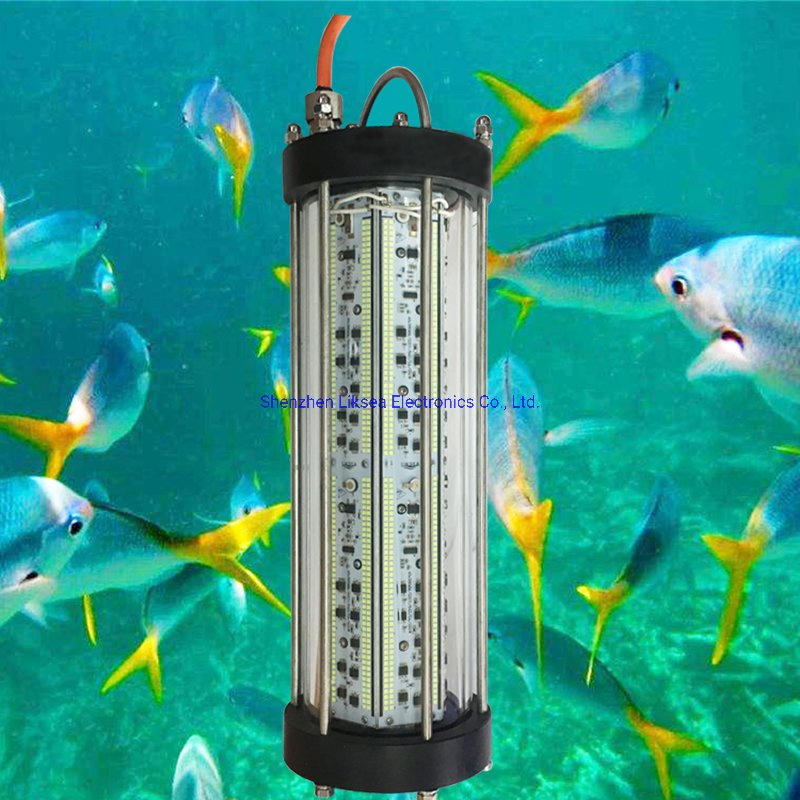
Illustrative Image (Source: Google Search)
International buyers should be aware of regional variations in regulatory standards concerning LED products. Compliance with these regulations not only ensures market entry but also enhances brand reputation. Furthermore, as the competition intensifies, buyers can benefit from leveraging strategic partnerships with manufacturers that prioritize quality and innovation in their offerings.
Sustainability and ethical sourcing have become paramount considerations in the 1500W LED fishing light sector. B2B buyers are increasingly seeking suppliers who demonstrate a commitment to environmentally friendly practices. This includes sourcing raw materials responsibly, utilizing recyclable components, and ensuring that manufacturing processes minimize waste and energy consumption.
In addition to environmental considerations, ethical sourcing practices encompass fair labor standards and transparency within the supply chain. Buyers should prioritize partnerships with manufacturers who can provide certifications and documentation that validate their commitment to ethical practices. This not only mitigates reputational risks but also aligns with the growing consumer preference for sustainable products.
Moreover, sustainability initiatives can offer a competitive advantage. Buyers who emphasize sustainability in their procurement strategies can appeal to environmentally conscious end-users, thereby enhancing marketability. As regulations around sustainability continue to tighten, investing in sustainable sourcing will likely yield long-term benefits for businesses in the fishing light sector.
The evolution of the 1500W LED fishing light sector reflects broader trends in lighting technology and energy conservation. Initially, fishing lights were primarily incandescent or halogen, characterized by high energy consumption and shorter lifespans. The advent of LED technology revolutionized the market, offering a solution that not only reduced energy costs but also improved visibility and safety for fishermen.
Over the years, advancements in LED technology have led to significant improvements in brightness, durability, and efficiency. Innovations such as improved heat dissipation and enhanced waterproofing have made LED lights more suitable for harsh marine environments. Today, the focus has shifted towards integrating smart technology and sustainability, positioning the 1500W LED fishing light as a critical component of modern fishing operations. This evolution underscores the importance of staying informed about technological advancements and market trends for B2B buyers aiming to succeed in this competitive landscape.
Frequently Asked Questions (FAQs) for B2B Buyers of 1500W LED fishing light
-
What should I consider when vetting suppliers for 1500W LED fishing lights?
When vetting suppliers, prioritize their experience in manufacturing LED lighting products, particularly fishing lights. Evaluate their certifications (like ISO or CE), production capacity, and compliance with international standards. Request samples to assess product quality and performance. Investigate their customer service responsiveness and after-sales support. Additionally, consider their financial stability to ensure they can fulfill large orders over time. Reviews and testimonials from other B2B buyers can provide insights into their reliability. -
Can I customize the 1500W LED fishing lights to fit my specific needs?
Yes, many manufacturers offer customization options, including color temperature, beam angle, and housing design. Before proceeding, clearly outline your requirements and confirm whether the supplier can accommodate them. Discuss lead times and any additional costs associated with custom features. Ensure that any modifications comply with local regulations and market preferences in your target regions.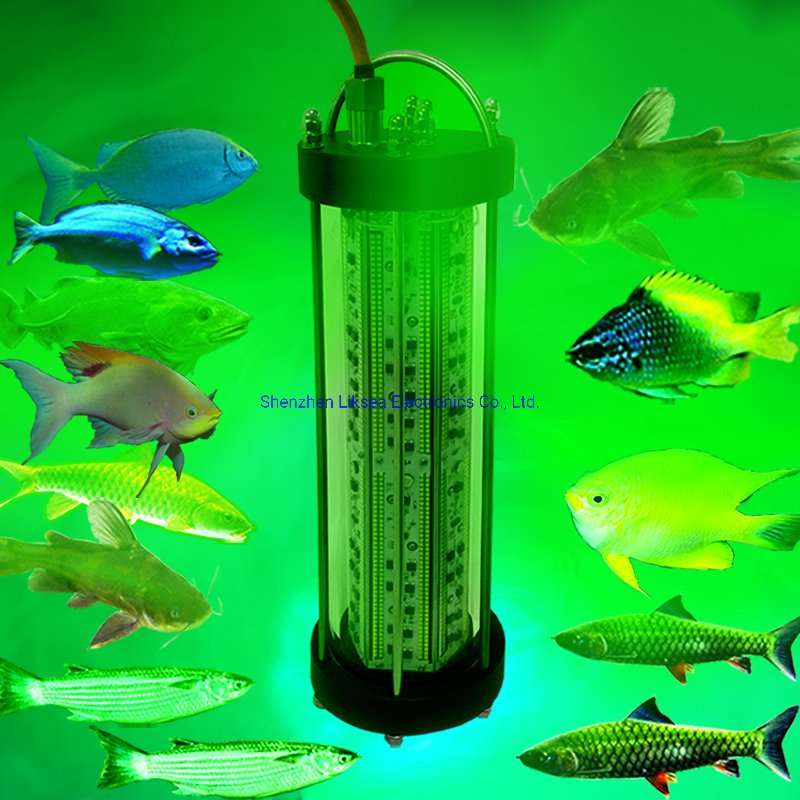
Illustrative Image (Source: Google Search)
-
What is the typical minimum order quantity (MOQ) for 1500W LED fishing lights?
MOQs can vary significantly among suppliers, typically ranging from 50 to 500 units. Factors influencing MOQ include production capabilities, customization options, and the supplier’s business model. If your needs are lower than the MOQ, some suppliers might offer flexibility or suggest combining orders with other products. Always negotiate terms to find a mutually beneficial arrangement. -
How can I ensure quality assurance (QA) for my orders?
To ensure quality, request detailed documentation of the supplier’s QA processes, including testing protocols and inspection reports. Consider third-party quality inspections before shipment to verify that products meet specifications. Establish a clear communication channel for addressing any quality concerns promptly. Regularly monitor the quality of shipments over time to build a reliable partnership. -
What logistics considerations should I keep in mind when sourcing LED fishing lights?
Logistics play a crucial role in the procurement process. Assess the supplier’s shipping capabilities, including delivery times and methods. Consider customs regulations and import duties in your country, as they can significantly impact overall costs. Working with a supplier experienced in international shipping can help mitigate risks and ensure timely delivery. Discuss packaging options to prevent damage during transit. -
Are there specific certifications or compliance requirements for LED fishing lights in my region?
Yes, compliance requirements vary by region. For example, Europe may require CE marking, while other regions might have specific energy efficiency ratings. Research local regulations regarding electrical products and ensure your supplier can provide the necessary certifications. This will facilitate smoother customs clearance and market entry, ensuring your products meet safety and performance standards. -
What are the common warranty terms for 1500W LED fishing lights?
Warranty terms typically range from one to five years, depending on the manufacturer and product specifications. Ensure you understand what the warranty covers, including defects in materials and workmanship. Discuss the process for handling warranty claims and any associated costs. A robust warranty can protect your investment and provide assurance of product reliability. -
How can I assess the long-term viability of a supplier?
Assessing long-term viability involves examining the supplier’s financial health, production capacity, and market reputation. Research their history of stability and growth, and engage with current clients to gauge satisfaction levels. Attend industry trade shows or conferences where the supplier showcases their products. Regular communication and visits to their facilities can also strengthen your relationship and provide insights into their operational practices.
Important Disclaimer & Terms of Use
⚠️ Important Disclaimer
The information provided in this guide is for informational and educational purposes only. It does not constitute professional procurement, financial, or legal advice.
While we have made every effort to ensure accuracy, we are not responsible for any errors or omissions. Market conditions and company details are subject to change.
B2B buyers must conduct their own independent and thorough due diligence before making any purchasing decisions.
Strategic Sourcing Conclusion and Outlook for 1500W LED fishing light
In conclusion, strategic sourcing for 1500W LED fishing lights is essential for international B2B buyers looking to optimize their procurement processes. By leveraging comprehensive supplier evaluations, understanding regional market dynamics, and embracing sustainable practices, buyers can ensure they acquire high-quality products that meet both performance and environmental standards. The rise in demand for energy-efficient lighting solutions, particularly in fishing industries across Africa, South America, the Middle East, and Europe, underscores the importance of making informed sourcing decisions.
B2B buyers should prioritize partnerships with manufacturers that emphasize innovation and reliability, as these attributes are crucial for maintaining competitive advantage. Additionally, considering the total cost of ownership—including maintenance and energy consumption—can lead to more sustainable and cost-effective investments.
As the market evolves, staying ahead of trends and technological advancements will be vital. We encourage buyers to engage in continuous market research and networking within industry forums to exchange insights and foster relationships. By adopting a proactive approach to sourcing, businesses can not only enhance their operational efficiency but also contribute positively to environmental stewardship and community well-being.

